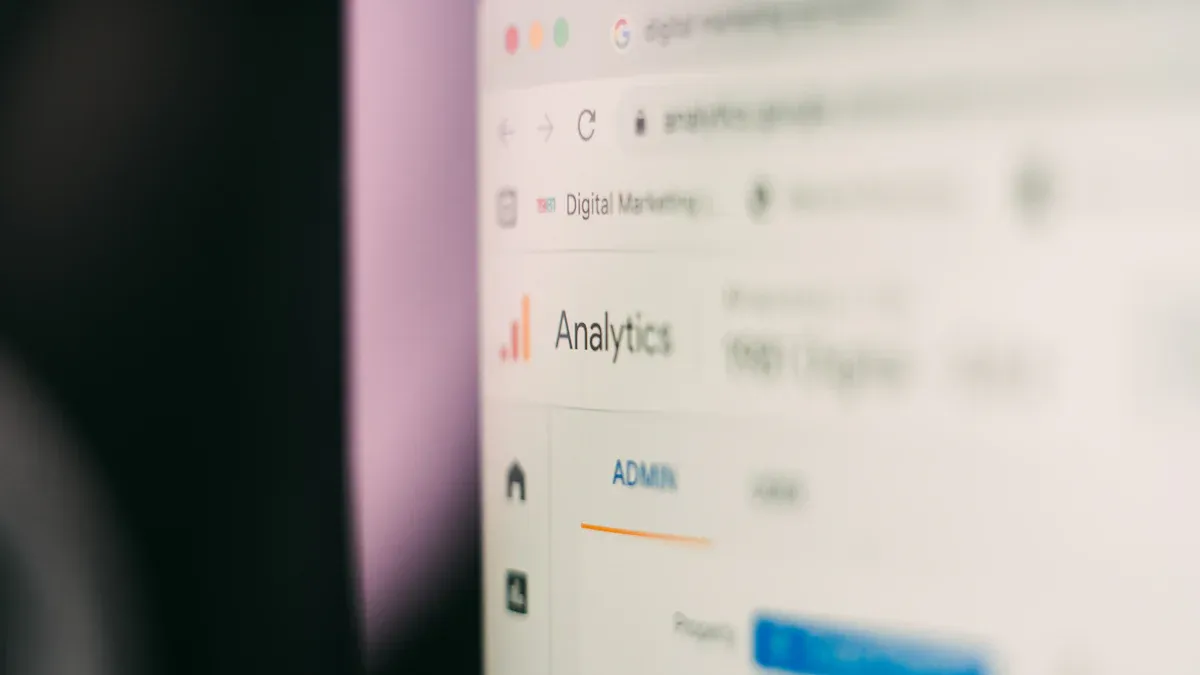How Generative AI Enhances SEO Strategies for 2025

Imagine a tool that not only writes content but also predicts what your audience wants to read next. That’s the power of generative AI, especially when it comes to generative AI SEO optimization. It’s reshaping SEO strategies by making them smarter and faster. Businesses are already seeing results. AI tools can boost SEO rankings by nearly 50%, giving you a competitive edge. Plus, with 69% of marketers using tools like ChatGPT, it’s clear that generative AI is becoming essential for staying ahead. By 2025, over 116 million Americans will use generative AI, showing its growing influence in shaping the digital landscape.
Did you know? The appearance of AI Overviews in search results jumped from 7% to 20% in just five months during 2024. This trend highlights how generative AI SEO optimization is driving changes in search behavior.
Key Takeaways
Generative AI can improve your SEO rankings by almost 50%. This gives you a big edge over others.
AI tools find important keywords and make content better. This helps more people see and enjoy your content.
Using AI for technical SEO tasks saves time. It also makes your website work better, so you can plan smarter.
AI makes content more personal, which keeps users interested. This makes your content more useful and fun for them.
AI helps you keep up with search engine changes. It predicts trends and how users might act.
The Role of Generative AI in SEO Optimization

Understanding Generative AI’s Impact on SEO
Generative AI is changing how you approach SEO. It’s not just about creating content anymore; it’s about creating the right content that resonates with your audience. For example, generative AI can help you identify the best keywords to target and seamlessly integrate them into your content. This improves your visibility on search engines. Another way it helps is through content clustering. By grouping related topics together, you can show search engines that your site is an authority in your niche. Plus, optimizing metadata with AI increases your chances of appearing in featured snippets, which can drive more traffic to your site.
Here’s the thing: AI-driven traffic is growing fast—by 45% month-over-month. But organic traffic still dominates, driving over 38% of all website visits. This means you need to balance both strategies to stay competitive. Generative AI gives you the tools to do just that.
Why Generative AI Is Essential for Modern SEO Strategies
You might wonder, why is generative AI so important for SEO today? The answer lies in its ability to adapt to changing trends. Traditional SEO metrics like rankings and organic traffic are still important, but AI introduces new metrics like answer accuracy and AI citations. These show how often your content gets referenced in AI-driven search results. For instance, a construction workforce platform optimized for AI search engines saw a significant boost in engagement, with 208 visitors from AI platforms alone.
Generative AI also helps you focus on high-impact keywords, improving your visibility and engagement. While organic click-through rates may decline due to AI, the clicks you get from AI results often come from users with higher intent. This means better leads and conversions for your business.
The Shift Toward AI-Driven SEO Optimization
The shift to AI-driven SEO is already happening. Companies that combine AI with traditional SEO practices have seen a 30% improvement in their digital performance over a year. Pages optimized for user behavior, a key feature of AI, can achieve up to a 30% increase in organic search traffic. This shows how AI doesn’t just enhance your SEO strategy—it transforms it.
Think about this: an e-commerce brand using AI insights reported a 35% increase in organic traffic within six months. That’s the power of generative AI SEO optimization. It helps you stay ahead by predicting trends, optimizing content, and improving user experience. If you’re not using AI yet, now’s the time to start.
Key Applications of Generative AI in SEO
Content Creation and Optimization at Scale
Creating high-quality content consistently can feel overwhelming, especially when you're managing multiple platforms. Generative AI changes the game by enabling you to produce and optimize content at scale. It helps you craft blog posts, product descriptions, and even social media captions in minutes. This means you can focus on strategy while AI handles the heavy lifting.
Companies like Hearst Newspapers have already embraced this approach. They use generative AI to create diverse content quickly, reducing the need for large teams while boosting creativity. Similarly, Iternal Technologies achieved a 30x marketing ROI and saved 90% on costs by leveraging AI for content creation. These examples show how AI can streamline your workflow and improve efficiency.
Generative AI also enhances content quality. About 67% of businesses report better results when using AI for content creation. It ensures your content is not only engaging but also optimized for search engines. By analyzing trends and user behavior, AI can suggest improvements to your headlines, structure, and even tone. This makes your content more likely to rank higher and attract the right audience.
Advanced Keyword Research and Discovery
Finding the right keywords is crucial for SEO success, but traditional methods can be time-consuming. Generative AI simplifies this process by analyzing vast amounts of data almost instantly. It identifies high-impact keywords and even predicts emerging trends, giving you a competitive edge.
AI-driven tools are moving beyond basic keyword searches. They now understand context and user intent, which means you can target more specific queries. For example, generative AI models provide human-like responses to complex questions, making your content more relevant to what users are searching for. This shift from traditional keyword-based systems to contextual understanding is transforming SEO strategies.
Surveys show that traditional search engines often yield irrelevant results, frustrating users. Generative AI addresses this by improving document search efficiency and reducing inaccuracies. It’s especially useful in industries like life sciences, where precise information is critical. By using AI, you can ensure your content aligns with what your audience truly needs.
Personalization for Improved User Engagement
Personalization is no longer optional—it’s expected. Generative AI helps you deliver tailored experiences that keep users engaged. It analyzes user behavior to recommend content, products, or services that match their preferences. This not only improves engagement but also builds trust with your audience.
Did you know that 90% of marketing leaders consider generative AI essential for personalization? Customers appreciate when brands understand their needs. About 47% of users enjoy personalized deals, and 42% prefer customized product recommendations. By leveraging AI, you can meet these expectations and stand out from competitors.
Generative AI also plays a role in decision-making. It helps users navigate overwhelming product options by offering curated suggestions. This makes their journey smoother and more enjoyable. Whether it’s through personalized emails or dynamic website content, AI ensures every interaction feels relevant and valuable.
Automating Technical SEO Tasks
Technical SEO can feel like a never-ending checklist. From fixing broken links to optimizing page speed, these tasks are essential but time-consuming. That’s where generative AI steps in to save the day. It automates repetitive tasks, giving you more time to focus on strategy and creativity.
Imagine running a site audit in minutes instead of hours. Generative AI tools can scan your website, identify issues, and even suggest fixes. Here’s a quick look at some common technical SEO problems and their implications:
Site Audit Parameters | Implications |
|---|---|
Broken links | They lead to poor user experience and negatively impact SEO |
Slow page load times | They could drive visitors away, hurting your ranking |
Duplicate content | Search engines might penalize you for using the same content on multiple pages |
By automating these tasks, you can ensure your website stays in top shape. For example, AI can detect duplicate content and rewrite it to make it unique. It can also compress images to improve page load times without sacrificing quality. These small changes can have a big impact on your rankings.
The best part? AI doesn’t just find problems—it helps you fix them. Some tools even generate optimized meta tags and structured data, ensuring your site is search-engine friendly. With generative AI, technical SEO becomes less of a chore and more of an opportunity to boost your site’s performance.
Generating Visual Content for SEO
Visual content is no longer just a nice-to-have. It’s a must-have for improving your SEO. Generative AI makes it easier than ever to create eye-catching visuals that engage your audience and enhance your rankings.
Here’s how AI-generated visuals can transform your SEO strategy:
Higher organic search ranking: More relevant and optimized content improves visibility in search results.
Increased website traffic: Attract a wider audience through diverse and targeted content.
Improved website authority: Consistent content creation establishes your website as a valuable resource, enhancing domain authority.
Take Acme Corporation, for example. They used generative AI to create product descriptions and saw a 20% increase in organic traffic. Their conversion rates also jumped by 15%. Similarly, fashion label Zest leveraged AI for social media captions. The result? A 30% increase in brand mentions and a 25% rise in follower engagement.
AI can generate everything from infographics to video thumbnails, all tailored to your audience’s preferences. These visuals not only make your content more engaging but also improve your chances of appearing in image and video search results. By incorporating generative AI into your visual content strategy, you can stay ahead of the competition and keep your audience coming back for more.
Predictive Capabilities of Generative AI for SEO Trends

Anticipating Search Engine Algorithm Updates
Search engines are constantly evolving, and staying ahead of these changes can feel like chasing a moving target. Generative AI helps you anticipate algorithm updates by analyzing historical data and identifying patterns in how search engines prioritize content. For example, since 2015, Google has used AI systems like RankBrain and BERT to better understand user intent and deliver more relevant results. These advancements have reshaped SEO strategies, making it essential for you to adapt quickly.
Experts predict that as AI technologies continue to evolve, search engines will place even greater emphasis on natural language processing and user-centric content. This means you’ll need to focus on creating content that aligns with user intent while maintaining high-quality standards. By leveraging generative AI, you can stay ahead of these shifts, ensuring your content remains visible and competitive in search rankings.
Forecasting User Search Intent and Behavior
Understanding what your audience wants before they even type it into a search bar is a game-changer. Generative AI excels at forecasting user search intent and behavior by analyzing massive amounts of data in real time. It can detect shifts in language, topics, and even sentiment, helping you predict what users will search for next.
Here’s how AI tools can help you forecast user behavior:
They segment user behavior based on search patterns, allowing you to create targeted SEO strategies.
Sentiment analysis gauges public feelings toward specific topics, giving you insights into shifting consumer interests.
Predictive models use historical data to forecast future queries, helping you stay one step ahead.
For example, AI can classify search queries to understand whether users are looking for information, making a purchase, or seeking a specific service. This insight allows you to tailor your content to meet their needs, improving engagement and conversions. By using generative AI, you can align your SEO strategy with what your audience truly wants, boosting your chances of success.
Identifying Emerging Keywords and Content Opportunities
The digital landscape is always changing, and new keywords and content opportunities emerge every day. Generative AI helps you identify these trends early, giving you a competitive edge. It analyzes search data to uncover rising topics and keywords that your competitors might not have noticed yet.
Here are some key trends shaping the future of SEO:
AI-generated content is becoming more prominent, with 15% of search engine results pages now featuring AI overviews. This number is expected to grow, making it crucial for you to incorporate AI into your strategy.
User-generated content (UGC) is on the rise, with interest surging by 575% over the last five years. By 2030, UGC is projected to drive 80% of SEO-enhancing content.
The importance of E-E-A-T (experience, expertise, authoritativeness, and trustworthiness) is growing, with search volume for this concept increasing by 344% in recent years.
Take Brian Dean’s experience as an example. He turned to a large language model (LLM) instead of Google for quick, concise answers. This shift highlights how users are increasingly relying on AI tools for information retrieval. By leveraging generative AI, you can identify these emerging trends and create content that resonates with your audience, ensuring your SEO strategy stays ahead of the curve.
Actionable Steps to Leverage Generative AI for SEO in 2025
Selecting the Best Generative AI Tools for SEO
Choosing the right tools can make or break your SEO strategy. With so many options available, how do you decide? Start by evaluating tools based on their features and how well they align with your goals. Here's a quick guide to help you compare:
Evaluation Criteria | Description |
|---|---|
Content Creation | The ability to generate high-quality, engaging content that meets user needs and SEO standards. |
Keyword Research | Tools should effectively identify relevant keywords and analyze search trends. |
Content Optimization | The capability to enhance existing content for better performance in search engine rankings. |
Meta Titles and Descriptions | Generating catchy and relevant meta titles and descriptions to improve click-through rates. |
Content Outlines | The ability to create structured outlines for various content types to streamline content creation. |
When selecting a tool, prioritize those that offer predictive analytics and real-time insights. These features help you anticipate trends and refine your strategy on the go.
Integrating AI into Your SEO Workflow Effectively
Incorporating AI into your workflow doesn’t have to be complicated. Start small by automating routine tasks like keyword research or site audits. AI tools can save you over 15 hours a week by handling these repetitive jobs. This gives you more time to focus on creative and strategic initiatives.
To make the most of AI, follow these tips:
Use AI for structured data implementation to boost content visibility.
Analyze competitors’ backlink profiles with AI to improve your link-building strategy.
Establish a quality control process to ensure AI-generated content meets your standards.
Companies that integrate AI effectively report a 30% reduction in manual tasks. This means your team can work smarter, not harder, while achieving better results.
Measuring and Refining AI-Driven SEO Performance
Tracking your progress is essential to ensure your AI-driven strategies are working. Start by setting a baseline for your current SEO performance. Then, define specific goals like increasing traffic or improving conversion rates.
Here’s a breakdown of key measurement techniques:
Measurement Technique | Description |
|---|---|
Baseline Measurement | Record current SEO performance metrics before implementing AI for comparison. |
Set Specific Goals | Define success metrics, such as desired increases in traffic or conversion rates. |
Regular Monitoring and Reporting | Use analytics dashboards to track performance metrics over time. |
A/B Testing | Compare effectiveness of strategies with and without AI insights. |
Feedback Loop | Continuously refine AI tools and strategies based on insights gained from monitoring. |
By regularly monitoring and refining your approach, you can maximize the impact of generative ai seo optimization. This ensures your strategy stays agile and effective as trends evolve.
Generative AI is reshaping SEO in ways you can’t ignore. It boosts efficiency, improves rankings, and helps you connect with your audience like never before. By adopting generative ai seo optimization, you’ll save time, reduce costs, and stay ahead in a competitive market. Here’s a quick look at the long-term benefits:
Benefit | Description |
|---|---|
Improved User Engagement | Personalization enhances user experience, leading to increased retention and brand loyalty. |
Increased Visibility and Rankings | Optimized content for AI-driven search engines improves search rankings and drives organic traffic. |
Efficiency and Cost-Effectiveness | AI tools streamline content creation, reducing time and resources needed for SEO maintenance. |
Data-Driven Decision Making | Continuous analysis of user behavior and trends allows for informed content strategy adjustments. |
Competitive Advantage | Effective integration of generative AI provides a unique edge in a crowded digital marketplace. |
Embracing AI isn’t just about keeping up—it’s about future-proofing your SEO strategy for sustainable growth.
FAQ
How can generative AI improve my SEO rankings?
Generative AI helps you optimize content with better keywords, metadata, and user intent analysis. It also predicts trends and creates engaging visuals, making your site more appealing to search engines.
What are the best tools for AI-driven SEO?
Popular tools include ChatGPT, Jasper, and Surfer SEO. These tools offer features like keyword research, content optimization, and predictive analytics. Choose one based on your specific needs and goals.
Is generative AI expensive to implement?
Not necessarily! Many AI tools offer affordable plans for small businesses. Plus, the time and cost savings from automation often outweigh the initial investment.
Can AI replace human creativity in SEO?
AI enhances creativity but doesn’t replace it. You still need to guide AI tools and add a personal touch to your content. Think of AI as your assistant, not your replacement.
How do I measure the success of AI-driven SEO?
Track metrics like organic traffic, keyword rankings, and conversion rates. Use analytics dashboards to monitor progress and refine your strategy based on insights.
See Also
Leveraging AI As Your Key Growth Ally in 2025
Essential Generative AI Prompting Advice for New Users in 2025
Understanding Generative AI: Its Definition and Functionality